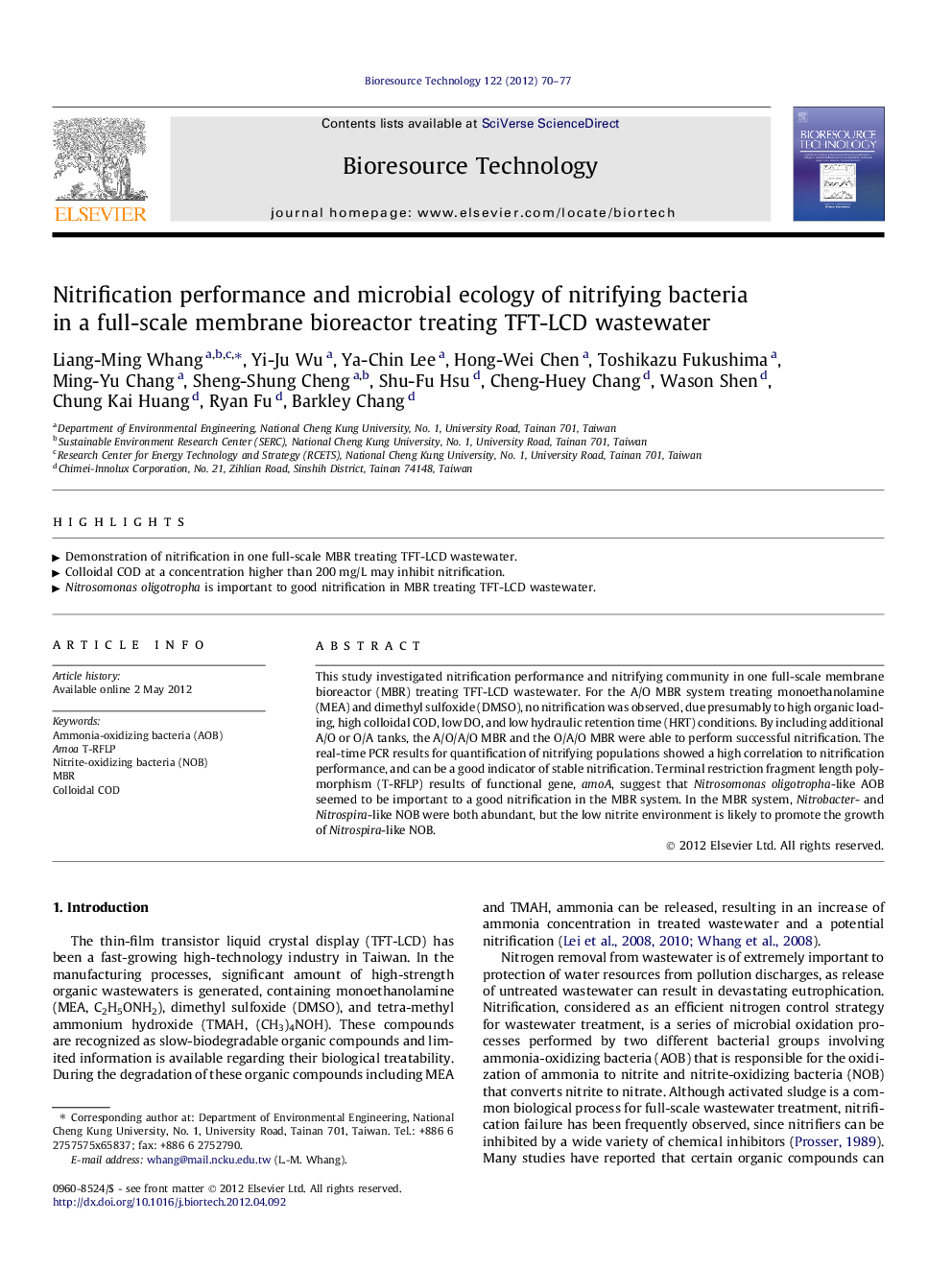| Article ID | Journal | Published Year | Pages | File Type |
|---|---|---|---|---|
| 681421 | Bioresource Technology | 2012 | 8 Pages |
This study investigated nitrification performance and nitrifying community in one full-scale membrane bioreactor (MBR) treating TFT-LCD wastewater. For the A/O MBR system treating monoethanolamine (MEA) and dimethyl sulfoxide (DMSO), no nitrification was observed, due presumably to high organic loading, high colloidal COD, low DO, and low hydraulic retention time (HRT) conditions. By including additional A/O or O/A tanks, the A/O/A/O MBR and the O/A/O MBR were able to perform successful nitrification. The real-time PCR results for quantification of nitrifying populations showed a high correlation to nitrification performance, and can be a good indicator of stable nitrification. Terminal restriction fragment length polymorphism (T-RFLP) results of functional gene, amoA, suggest that Nitrosomonas oligotropha-like AOB seemed to be important to a good nitrification in the MBR system. In the MBR system, Nitrobacter- and Nitrospira-like NOB were both abundant, but the low nitrite environment is likely to promote the growth of Nitrospira-like NOB.
► Demonstration of nitrification in one full-scale MBR treating TFT-LCD wastewater. ► Colloidal COD at a concentration higher than 200 mg/L may inhibit nitrification. ► Nitrosomonas oligotropha is important to good nitrification in MBR treating TFT-LCD wastewater.
